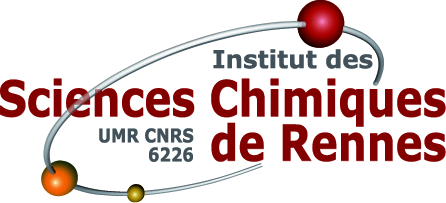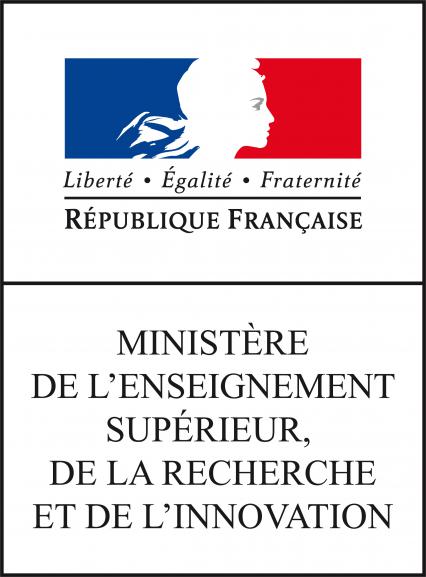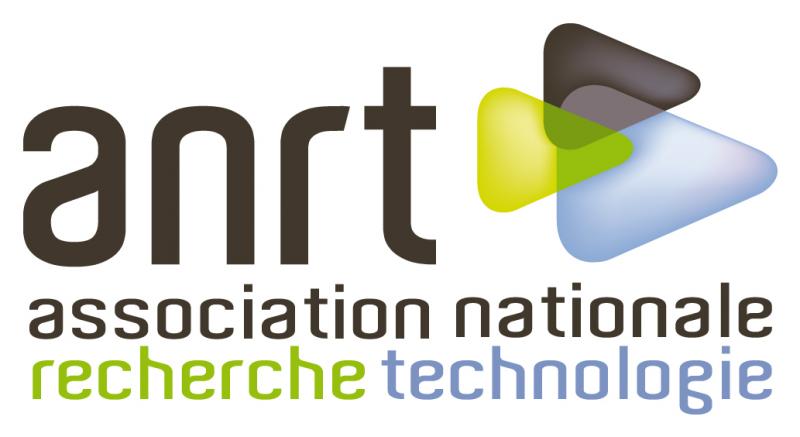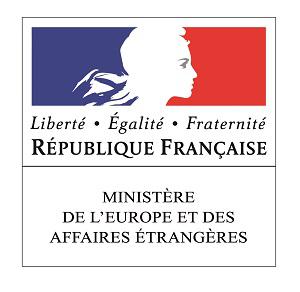The « Luminescence and Colorimetry » technical platform has been designed, with the financial support of Rennes Métropole (AES, AIS), to study the photophysical properties of rare‑earth-based coordination polymers likely to find their application as sensors (chemical or thermometric) or taggants (anti‑counterfeiting). In addition to classical UV‑vis and IR absorption spectrometers, it has the necessary equipment (spectrofluorometers) to study their luminescence properties (lifetime from the second to the nanosecond scale, quantum yields (290 ‑ 850 nm), emission and excitation spectra, 3D scan (emission vs. excitation), CIE coordinates (x, y). …) in wide excitation (250 ‑ 850 nm), emission (280 – 1700 nm) and temperature (77 K – 383 K) wavelength ranges thanks to a cryostat and a Peltier effect module. An originality of this platform is its ability to measure the luminescence intensity (luminance in Cd.m‑2) of compounds in powder form. Although essential for the study of the efficiency of materials, this measurement is currently very little practiced and, to our knowledge, our team is the only one to practice it on coordination compounds. In the framework of the next contract, our team is pursuing two main objectives: (i) the acquisition of a « cryogen free » type cryostat allowing luminescence measurements down to 4 K (request made within the framework of the CPER). This would allow measuring the position of the Stark sublevels whose knowledge is fundamental for the elaboration of magneto-optical correlations in rare earth-based coordination compounds. This type of cryostat, which does not use helium, addresses ecological and financial concerns; (ii) to produce a prototype that would allow the transition from relative luminance measurements to absolute measurements. This prototype is currently under development.
Thus, this platform will allow us, during the next five‑year contract, to continue the study of the photophysical mechanisms (inter-system crossing, intermetallic energy transfer, sensitization efficiency, back‑transfer,…) that govern the luminescence properties of rare earth-based coordination compounds. This equipment is crucial for the joint laboratory « ChemInTag ». The measurements carried out on this platform will also allow us a better understanding of the dynamic magnetic properties of these systems. It will also be used to study other types of compounds such as mixed anion materials (oxynitrides, oxysulfides, oxycyanamides) studied in the framework of an inter-team project (CSM/V&C), CuI-based supramolecular compounds (ANR PRC Project ‘SMAC’ and PICS Project with Germany) or 4f‑3d coordination compounds (ECOS Project with Chile).
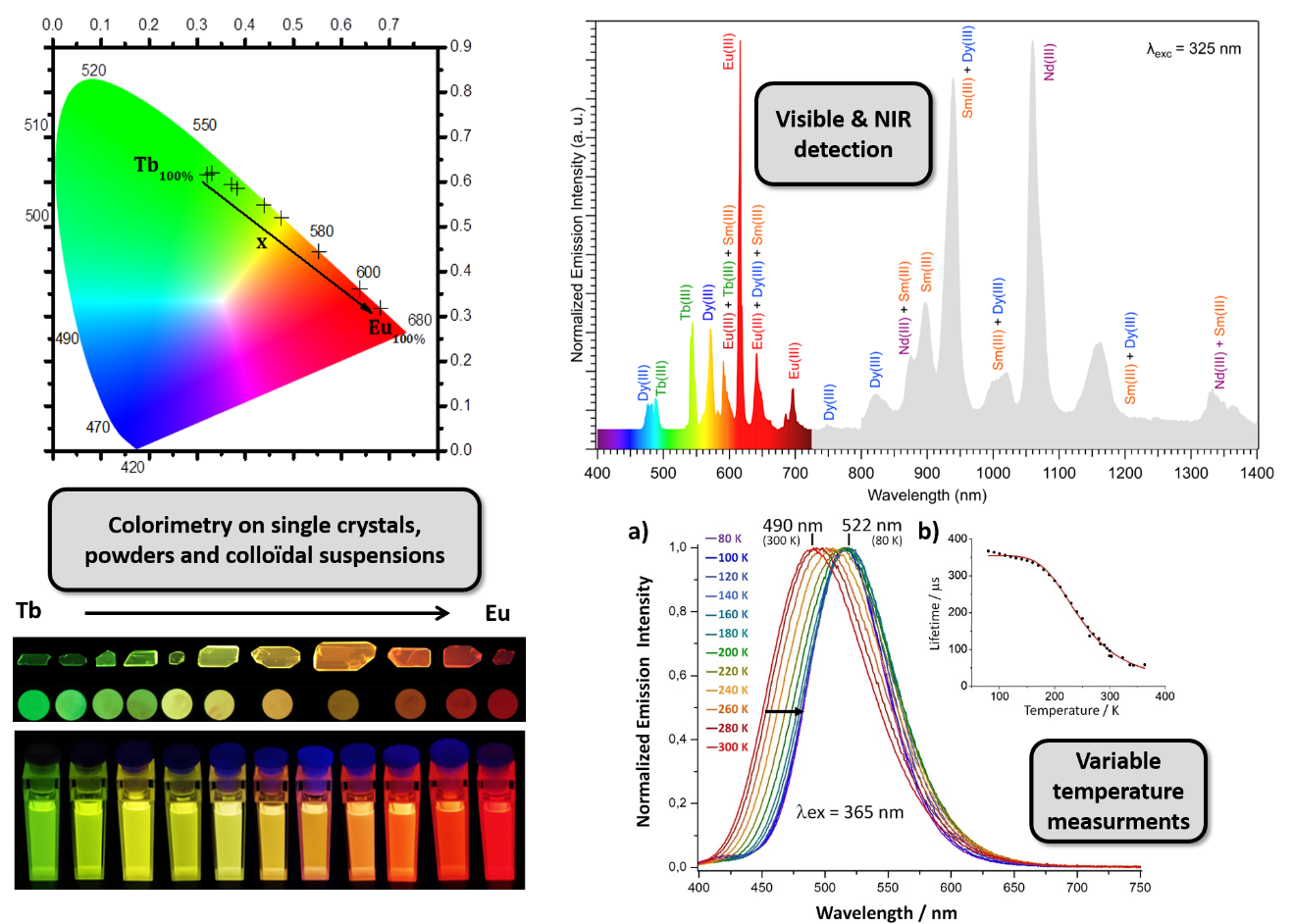
Figure : Colorimetric coordinates and pictures of pellets of single-crystals, microcrystalline powders and colloidal suspension of Tb/Eu-based coordination polymers (left). Emission spectrum in the visible and IR regions of a molecular alloys containing NdIII, SmIII, Eu III, Gd III, Tb III and Dy III ions as luminescent bar-code (top right). Solid-state emission spectra and emission decay lifetime measured with variable temperature (80-300K) on a Cu(I)-based molecule.
Recent works illustrating the « Luminescence and colorimetry » technical platform :
(1) Abdallah, A.; Puget, M.; Daiguebonne, C.; Suffren, Y.; Calvez, G.; Bernot, K.; Guillou, O., A new series of lanthanide-based complexes with a bis(hydroxy)benzoxaborolone ligand: synthesis, crystal structure, and magnetic and optical properties. Crystengcomm 2020, 22, 2020-2030.
(2) Pointel, Y.; Houard, F.; Suffren, Y.; Daiguebonne, C.; Le Natur, F.; Freslon, S.; Calvez, G.; Bernot, K.; Guillou, O., High Luminance of Heterolanthanide-Based Molecular Alloys by Phase-Induction Strategy. Inorg. Chem. 2020, 59, 11028-11040.
(3) Pointel, Y.; Suffren, Y.; Daiguebonne, C.; Le Natur, F.; Freslon, S.; Calvez, G.; Bernot, K.; Guillou, O., Rational Design of Dual IR and Visible Highly Luminescent Light-Lanthanides-Based Coordination Polymers. Inorg. Chem. 2020, 59, 10673-10687.
(4) Evrard, Q.; Houard, F.; Daiguebonne, C.; Calvez, G.; Suffren, Y.; Guillou, O.; Mannini, M.; Bernot, K., Sonocrystallization as an Efficient Way to Control the Size, Morphology, and Purity of Coordination Compound Microcrystallites: Application to a Single-Chain Magnet. Inorg. Chem. 2020, 59, 9215-9226.
(5) Houard, F.; Evrard, Q.; Calvez, G.; Suffren, Y.; Daiguebonne, C.; Guillou, O.; Gendron, F.; Le Guennic, B.; Guizouarn, T.; Dorcet, V.; Mannini, M.; Bernot, K., Chiral Supramolecular Nanotubes of Single-Chain Magnets. Angew. Chem. Int. Ed. 2020, 59, 780-784.
(6) Evariste, S.; Khalil, A. M.; Kerneis, S.; Xu, C.; Calvez, G.; Costuas, K.; Lescop, C., Luminescent vapochromic single crystal to single crystal transition in one-dimensional coordination polymer featuring the first Cu(i) dimer bridged by an aqua ligand. Inorg. Chem. Front. 2020, 7, 3402-3411.
(7) Evariste, S.; Moussa, M. E. S.; Wong, H.-L.; Calvez, G.; Yam, V. W.-W.; Lescop, C., Straightforward Preparation of a Solid-state Luminescent Cu-11 Polymetallic Assembly via Adaptive Coordination-driven Supramolecular Chemistry. Z. Anorg. Allg. Chem. 2020, 646, 754-760.
(8) Moussa, M. E. S.; Khalil, A. M.; Evariste, S.; Wong, H.-L.; Delmas, V.; Le Guennic, B.; Calvez, G.; Costuas, K.; Yam, V. W.-W.; Lescop, C., Intramolecular rearrangements guided by adaptive coordination-driven reactions toward highly luminescent polynuclear Cu(I) assemblies. Inorg. Chem. Front. 2020, 7, 1334-1344.
(9) Maouche, R.; Belaid, S.; Benmerad, B.; Bouacida, S.; Freslon, S.; Daiguebonne, C.; Suffren, Y.; Calvez, G.; Bernot, K.; Roiland, C.; Le Polles, L.; Guillou, O., Luminescence properties of lanthanide complexes-based molecular alloys. Inorg. Chim. Acta 2020, 501.
(10) de Rohello, E. L.; Suffren, Y.; Merdrignac-Conanec, O.; Guillou, O.; Chevire, F., Effect of cationic substitutions on the photoluminescence properties of Eu2+ doped SrCN2 prepared by a facile C3N4 based synthetic approach. J. Eur. Ceram. Soc. 2020, 40, 6316-6321.
Optical characterizations (Luminescence and Colorimetry technical plateform) :
‑ 1 spectroflurimeter Fluorolog-3 HJY (CW and pulsed Xe lamp, R928 PMT and InGaAs photodiode detectors, 250‑1700 nm).
– 1 spectroflurimeter Fluoromax-4 Plus HJY (CW Xe lamp, R928 PMT detector, 250‑850 nm).
– 1 TCSPC module coupled to 8 UV or VISIBLE sources HJY (280, 300, 320, 340, 360, 375, 395 and 405 nm) for lifetime measurement (500 ps – s).
– 2 integrating spheres HJY and GMP (330‑850 nm and 250-2500 nm) for quantum yield measurements.
– 2 external visible IR sources (360‑2600 nm and 450‑5500 nm) Thorlabs.
‑ 1 cryostat OptistatCF Oxford Inst. + Peltier module HJY for measurements between 77 and 383 K.
‑ 2 spectrofluorimeters LS55 et LS50B Perkin‑Elmer.
‑ 2 luminancemeters Majantys and ScienTec (Luminance prototype).
‑ 2 powermeter S120VC and S401C with PM100 and PM100D controller Thorlabs.
‑ 1 monochromator (190‑560) Edmund Optics (Luminance prototype).
‑ 1 radiometer with 3 sensors (256, 312 and 365 nm) Fisher Sci.
‑ 1 calibrating lamp (230‑1100 nm) Ocean Insight.
‑ 4 leds 308 nm and 4 leds 325 nm Roithner (Luminance prototype).
‑ 1 spectrophotometer UV‑Visible Lambda 650 (Tungsten‑Halogen and Deuterium lamps, PMT R955 detector, 190‑900 nm) + integrating sphere Perkin‑Elmer.
‑ 1 spectrofluorimeter FTIR with UATR + integrating sphere Perkin‑Elmer + IR-TG/DSC Coupling line transfer.
‑ 1 spectroflurimeter for colorimetry (x and y coordinate determination).
‑ 1 IR Laser‑diode 980 nm Roithner.
‑ Absorption cuvettes, émission cuvettes, quartz cells, capillaries, attenuating, cutoff and band‑pass filters, optical lens, small optical table, optical fibers…
‑ 1 optical oven Grosseron for optical consumables (absorption and emission cuvettes, capillaries,…)
‑ 1 Illuminating chamber Brant Ind.
‑ 1 inversed microscope Olympus with spectrometer Optoprim.





